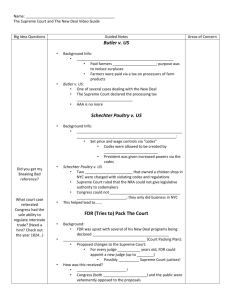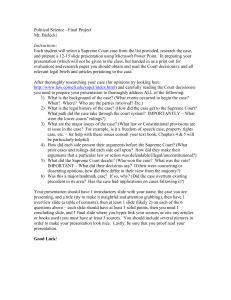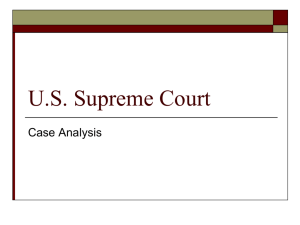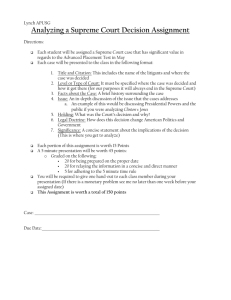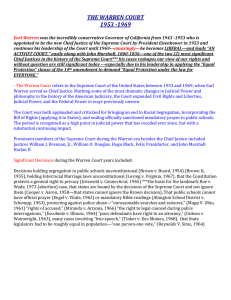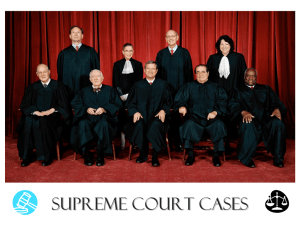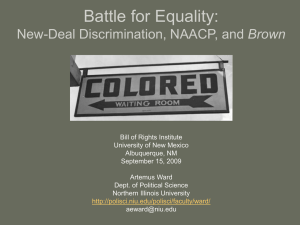History 3457/Children's Studies 3120 Higher Education, Public
advertisement
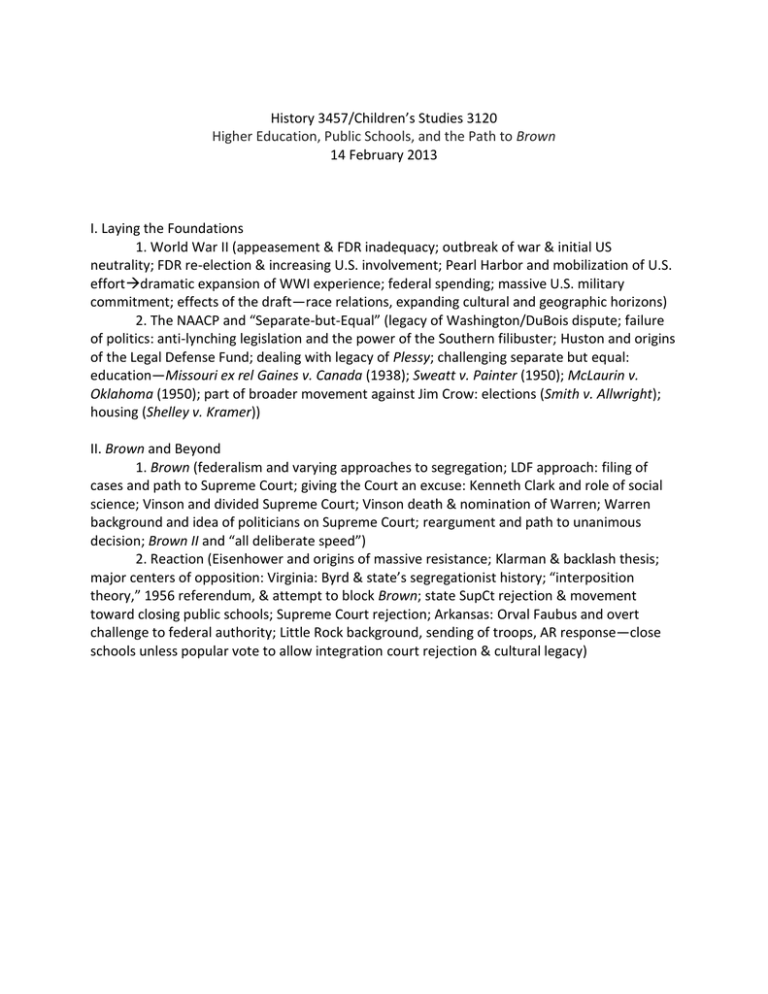
History 3457/Children’s Studies 3120 Higher Education, Public Schools, and the Path to Brown 14 February 2013 I. Laying the Foundations 1. World War II (appeasement & FDR inadequacy; outbreak of war & initial US neutrality; FDR re-election & increasing U.S. involvement; Pearl Harbor and mobilization of U.S. effortdramatic expansion of WWI experience; federal spending; massive U.S. military commitment; effects of the draft—race relations, expanding cultural and geographic horizons) 2. The NAACP and “Separate-but-Equal” (legacy of Washington/DuBois dispute; failure of politics: anti-lynching legislation and the power of the Southern filibuster; Huston and origins of the Legal Defense Fund; dealing with legacy of Plessy; challenging separate but equal: education—Missouri ex rel Gaines v. Canada (1938); Sweatt v. Painter (1950); McLaurin v. Oklahoma (1950); part of broader movement against Jim Crow: elections (Smith v. Allwright); housing (Shelley v. Kramer)) II. Brown and Beyond 1. Brown (federalism and varying approaches to segregation; LDF approach: filing of cases and path to Supreme Court; giving the Court an excuse: Kenneth Clark and role of social science; Vinson and divided Supreme Court; Vinson death & nomination of Warren; Warren background and idea of politicians on Supreme Court; reargument and path to unanimous decision; Brown II and “all deliberate speed”) 2. Reaction (Eisenhower and origins of massive resistance; Klarman & backlash thesis; major centers of opposition: Virginia: Byrd & state’s segregationist history; “interposition theory,” 1956 referendum, & attempt to block Brown; state SupCt rejection & movement toward closing public schools; Supreme Court rejection; Arkansas: Orval Faubus and overt challenge to federal authority; Little Rock background, sending of troops, AR response—close schools unless popular vote to allow integration court rejection & cultural legacy)

